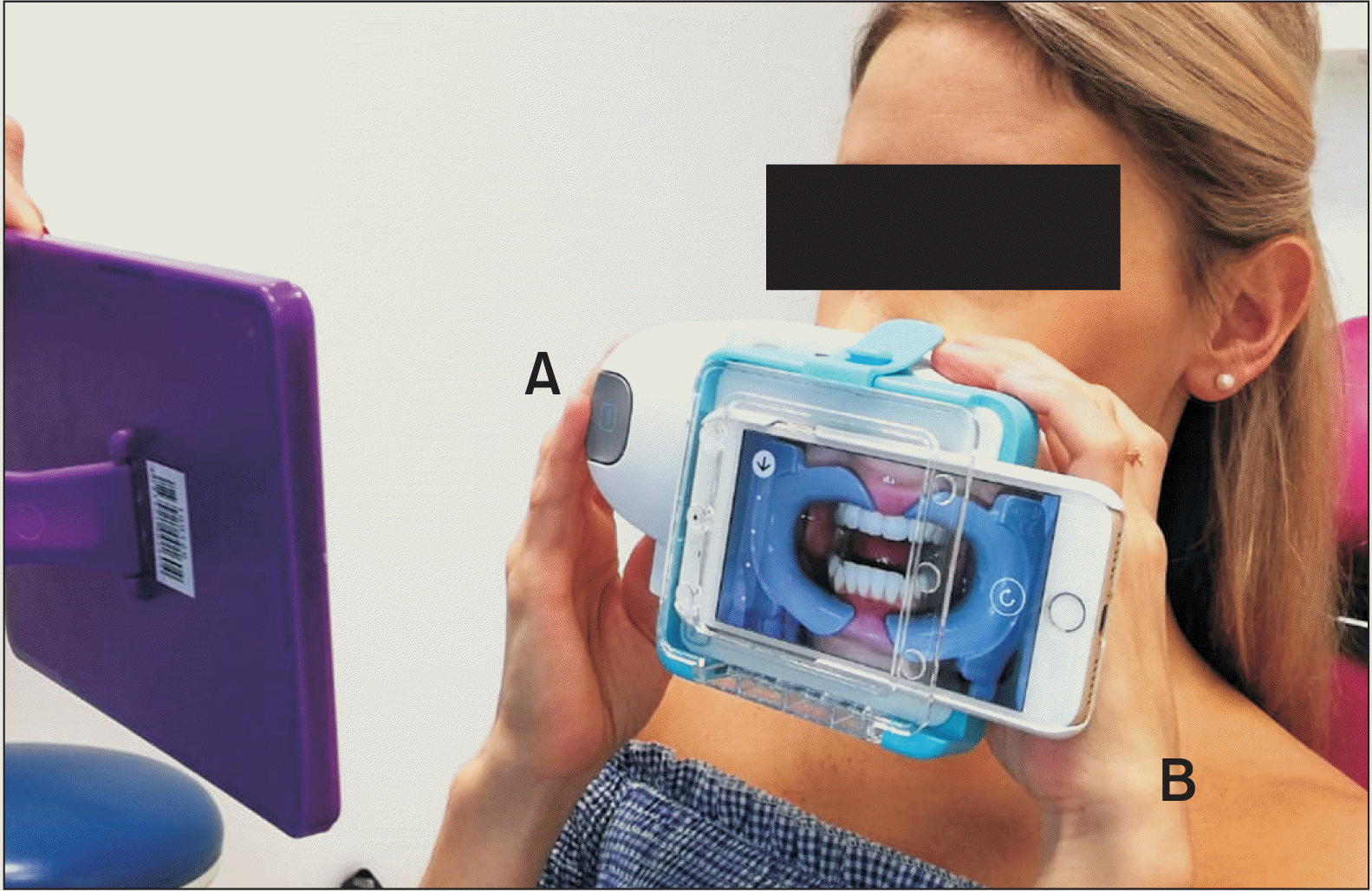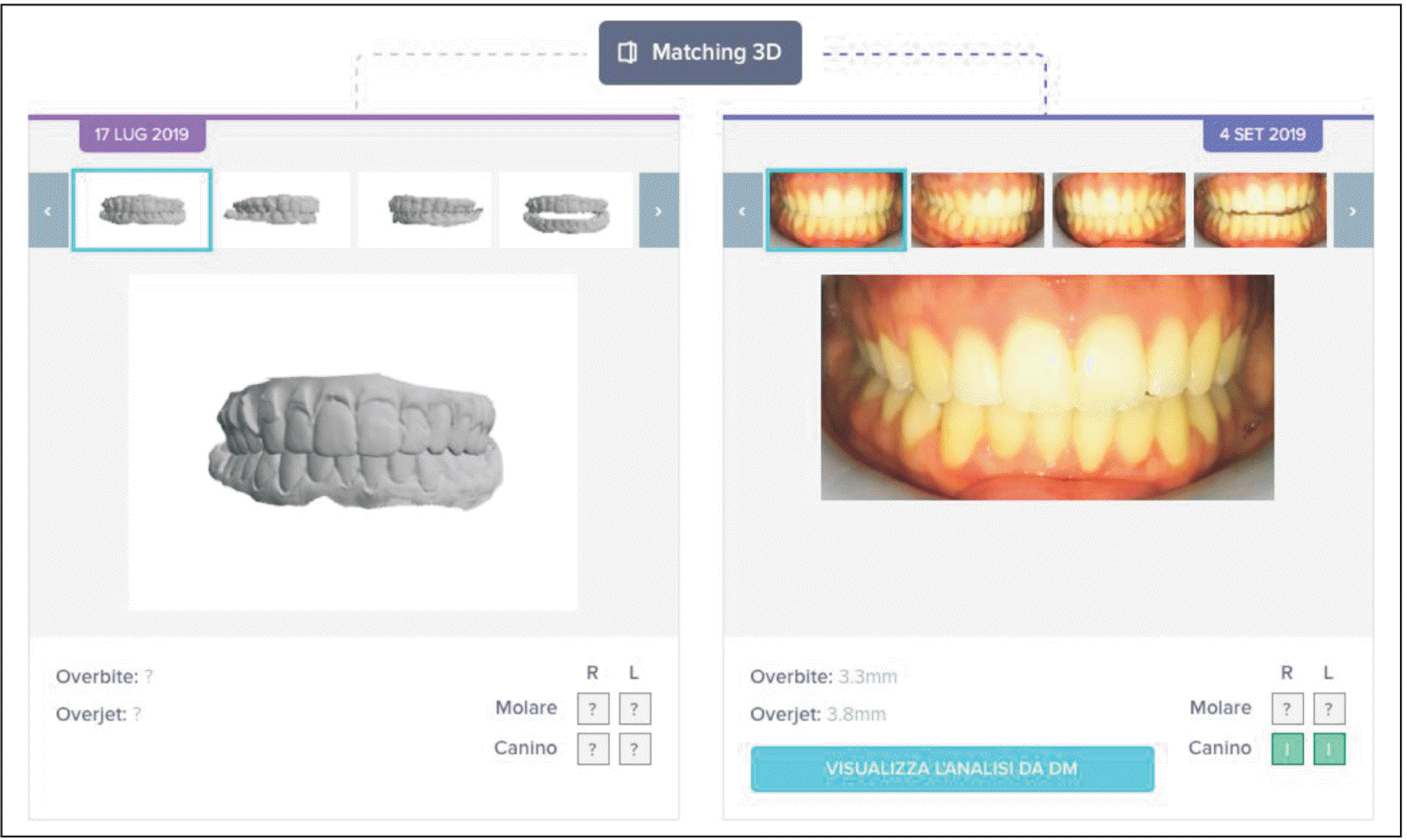1. Bondemark L, Holm AK, Hansen K, Axelsson S, Mohlin B, Brattstrom V, et al. 2007; Long-term stability of orthodontic treatment and patient satisfaction. A systematic review. Angle Orthod. 77:181–91. DOI:
10.2319/011006-16R.1. PMID:
17029533.
2. Littlewood SJ, Millett DT, Doubleday B, Bearn DR, Worthington HV. 2016; Retention procedures for stabilising tooth position after treatment with orthodontic braces. Cochrane Database Syst Rev. 2016:CD002283. DOI:
10.1002/14651858.CD002283.pub4. PMID:
26824885. PMCID:
PMC7138206.

3. Miyazaki H, Motegi E, Yatabe K, Isshiki Y. 1998; Occlusal stability after extraction orthodontic therapy in adult and adolescent patients. Am J Orthod Dentofacial Orthop. 114:530–7. DOI:
10.1016/S0889-5406(98)70173-8. PMID:
9810049.

4. Ackerman MB, McRae MS, Longley WH. 2009; Microsensor technology to help monitor removable appliance wear. Am J Orthod Dentofacial Orthop. 135:549–51. DOI:
10.1016/j.ajodo.2008.06.021. PMID:
19361743.

5. Tsomos G, Ludwig B, Grossen J, Pazera P, Gkantidis N. 2014; Objective assessment of patient compliance with removable orthodontic appliances: a cross-sectional cohort study. Angle Orthod. 84:56–61. DOI:
10.2319/042313-315.1. PMID:
23834273. PMCID:
PMC8683054.

6. Zotti F, Zotti R, Albanese M, Nocini PF, Paganelli C. 2019; Implementing post-orthodontic compliance among adolescents wearing removable retainers through Whatsapp: a pilot study. Patient Prefer Adherence. 13:609–15. DOI:
10.2147/PPA.S200822. PMID:
31118585. PMCID:
PMC6498955.
7. El-Huni A, Colonio Salazar FB, Sharma PK, Fleming PS. 2019; Understanding factors influencing compliance with removable functional appliances: a qualitative study. Am J Orthod Dentofacial Orthop. 155:173–81. DOI:
10.1016/j.ajodo.2018.06.011. PMID:
30712688.

8. Al-Moghrabi D, Pandis N, McLaughlin K, Johal A, Donos N, Fleming PS. 2020; Evaluation of the effectiveness of a tailored mobile application in increasing the duration of wear of thermoplastic retainers: a randomized controlled trial. Eur J Orthod. 42:571–9. DOI:
10.1093/ejo/cjz088. PMID:
31799628.

9. Ackerman MB, Thornton B. 2011; Posttreatment compliance with removable maxillary retention in a teenage population: a short-term randomized clinical trial. Orthodontics (Chic. ). 12:22–7.
10. Roisin LC, Brézulier D, Sorel O. 2016; Remotely-controlled orthodontics: fundamentals and description of the Dental Monitoring system. J Dentofacial Anom Orthod. 19:408. DOI:
10.1051/odfen/2016021.

11. Morris RS, Hoye LN, Elnagar MH, Atsawasuwan P, Galang-Boquiren MT, Caplin J, et al. 2019; Accuracy of Dental Monitoring 3D digital dental models using photograph and video mode. Am J Orthod Dentofacial Orthop. 156:420–8. DOI:
10.1016/j.ajodo.2019.02.014. PMID:
31474272.

12. Moylan HB, Carrico CK, Lindauer SJ, Tüfekçi E. 2019; Accuracy of a smartphone-based orthodontic treatment-monitoring application: a pilot study. Angle Orthod. 89:727–33. DOI:
10.2319/100218-710.1. PMID:
30888840. PMCID:
PMC8111833.

15. Bianco A, Dalessandri D, Oliva B, Tonni I, Isola G, Visconti L, et al. 2021; COVID-19 and orthodontics: an approach for monitoring patients at home. Open Dent J. 15 Suppl 1:87–96. DOI:
10.2174/1874210602115010087.

17. Grünheid T, Loh C, Larson BE. 2017; How accurate is Invisalign in nonextraction cases? Are predicted tooth positions achieved? Angle Orthod. 87:809–15. DOI:
10.2319/022717-147.1. PMID:
28686090. PMCID:
PMC8317555.

18. Adamek A, Minch L, Kawala B. 2015; Intercanine width- review of the literature. Dent Med Probl. 52:336–40.
19. Vaid NR. 2021; Artificial Intelligence (AI) driven orthodontic care: a quest toward utopia? Semin Orthod. 27:57–61. DOI:
10.1053/j.sodo.2021.05.001.

20. Hansa I, Katyal V, Semaan SJ, Coyne R, Vaid NR. 2021; Artificial Intelligence Driven Remote Monitoring of orthodontic patients: clinical applicability and rationale. Semin Orthod. 27:138–56. DOI:
10.1053/j.sodo.2021.05.010.

21. Hansa I, Semaan SJ, Vaid NR, Ferguson DJ. 2018; Remote monitoring and "
Tele-orthodontics": concept, scope and applications. Semin Orthod. 24:470–81. DOI:
10.1053/j.sodo.2018.10.011.
23. Vaid NR, Hansa I, Bichu Y. 2020; Smartphone applications used in orthodontics: a scoping review of scholarly literature. J World Fed Orthod. 9(3S):S67–73. DOI:
10.1016/j.ejwf.2020.08.007. PMID:
33023735.

24. Zotti F, Dalessandri D, Salgarello S, Piancino M, Bonetti S, Visconti L, et al. 2016; Usefulness of an app in improving oral hygiene compliance in adolescent orthodontic patients. Angle Orthod. 86:101–7. DOI:
10.2319/010915-19.1. PMID:
25799001. PMCID:
PMC8603968.

27. Hansa I, Katyal V, Ferguson DJ, Vaid N. 2021; Outcomes of clear aligner treatment with and without Dental Monitoring: a retrospective cohort study. Am J Orthod Dentofacial Orthop. 159:453–9. DOI:
10.1016/j.ajodo.2020.02.010. PMID:
33573897.

28. Kuriakose P, Greenlee GM, Heaton LJ, Khosravi R, Tressel W, Bollen AM. 2019; The assessment of rapid palatal expansion using a remote monitoring software. J World Fed Orthod. 8:165–70. DOI:
10.1016/j.ejwf.2019.11.001.

29. Savoldi F, Tsoi JKH, Paganelli C, Matinlinna JP. 2017; Evaluation of rapid maxillary expansion through acoustic emission technique and relative soft tissue attenuation. J Mech Behav Biomed Mater. 65:513–21. DOI:
10.1016/j.jmbbm.2016.09.016. PMID:
27669497.

30. Impellizzeri A, Horodinsky M, Barbato E, Polimeni A, Salah P, Galluccio G. 2020; Dental Monitoring Application: it is a valid innovation in the Orthodontics Practice? Clin Ter. 171:e260–7. DOI:
10.7417/CT.2020.2224. PMID:
32323716.
31. Hannequin R, Ouadi E, Racy E, Moreau N. 2020; Clinical follow-up of corticotomy-accelerated Invisalign orthodontic treatment with Dental Monitoring. Am J Orthod Dentofacial Orthop. 158:878–88. DOI:
10.1016/j.ajodo.2019.06.025. PMID:
33129633.

32. Purssell E, Drey N, Chudleigh J, Creedon S, Gould DJ. 2020; The Hawthorne effect on adherence to hand hygiene in patient care. J Hosp Infect. 106:311–7. DOI:
10.1016/j.jhin.2020.07.028. PMID:
32763330.

33. Al-Moghrabi D, Colonio-Salazar FB, Johal A, Fleming PS. 2020; Development of 'My Retainers' mobile application: triangulation of two qualitative methods. J Dent. 94:103281. DOI:
10.1016/j.jdent.2020.103281. PMID:
31987979.

35. Steinnes J, Johnsen G, Kerosuo H. 2017; Stability of orthodontic treatment outcome in relation to retention status: an 8-year follow-up. Am J Orthod Dentofacial Orthop. 151:1027–33. DOI:
10.1016/j.ajodo.2016.10.032. PMID:
28554448.

36. Başçiftçi FA, Uysal T, Sari Z, Inan O. 2007; Occlusal contacts with different retention procedures in 1-year follow-up period. Am J Orthod Dentofacial Orthop. 131:357–62. DOI:
10.1016/j.ajodo.2005.05.052. PMID:
17346591.

37. Olive RJ, Basford KE. 2003; A longitudinal index study of orthodontic stability and relapse. Aust Orthod J. 19:47–55. PMID:
14703329.
38. Suri S, Vandersluis YR, Kochhar AS, Bhasin R, Abdallah MN. 2020; Clinical orthodontic management during the COVID-19 pandemic. Angle Orthod. 90:473–84. DOI:
10.2319/033120-236.1. PMID:
32396601. PMCID:
PMC8028467.

39. Torkan S, Firth F, Fleming PS, Kravitz ND, Farella M, Huang GJ. 2021; Retention: taking a more active role. Br Dent J. 230:731–8. DOI:
10.1038/s41415-021-2952-9. PMID:
34117428.

40. Edwards JG. 1988; A long-term prospective evaluation of the circumferential supracrestal fiberotomy in alleviating orthodontic relapse. Am J Orthod Dentofacial Orthop. 93:380–7. DOI:
10.1016/0889-5406(88)90096-0. PMID:
3163217.






 PDF
PDF Citation
Citation Print
Print





 XML Download
XML Download